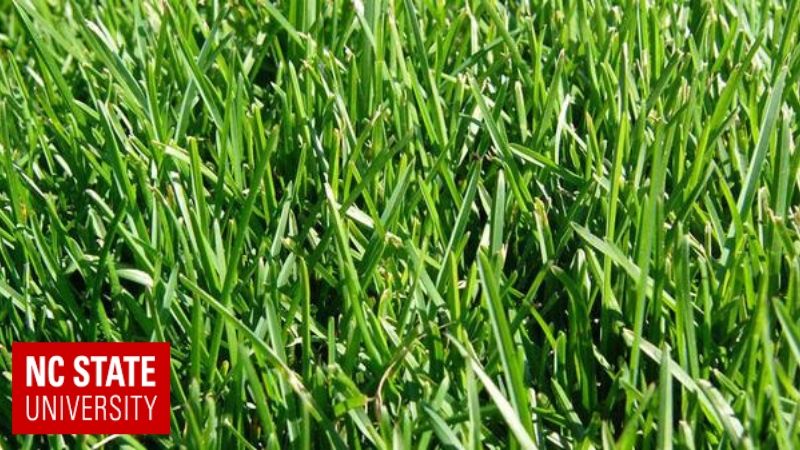They are tough and form a dense lawn cover that thickens as they age. Augustine centipedegrass zoysiagrass and bahaigrass None of the above listed species can survive the winters of Colorado but can make great lawns in their adaptive areas.

What Is The Best Warm Season Grass For Your Lawn
However some warm-season grasses also grow well there because of the hot dry summers.

Warm season grasses typically. In the embryos of cool-season turfgrasses the mesocotyl internode is presentabsent. The are not green during the cold spells of winter. Cool season plants tend to grow most when soil conditions are cool usually in Spring and Fall.
Ornamental grasses can be used to great effect in our gardens from providing a calming presence to more exuberant flowering plants to being the only focus of the design. Bermuda and other warm-season grasses will provide similar minimal performance when irrigated at about 40 of ET o. All grasses are members of a single family of plants called the _____.
Warm-season grasses are usually planted in the spring and include popular varieties such as Bermuda grass zoysia grass St. Warm Season Grasses generally start growing in late spring or early summer and have their active growth period during the heat of the summer. They are often called southern grasses because they grow best in hot summer areas and lack the winter hardiness of the cool-season grasses.
This creates opportunities for wildflowers to flourish. Native cool-season grasses are an excellent option when shorter native grasses are desired. Native cool-season grasses provide more wildlife value than introduced cool-season grasses.
Many are ideal for gravel gardens prairie planting wildlife gardens and are great to add to the cutting garden. There are two major types of grass used for lawns in the South. Warm-season grass and evergreen grass.
The four main warm-season turf grasses are Bermuda grass St. On average these climates have cold winters and warm to hot summers. Others perform well in containers.
These species include Bermuda St. Cool season and warm season. Typical cool season grass types include.
Best Cool Season Grasses. Warm season grasses usually do not require as frequent division as cool season grasses. The latter are commonly referred to collectively as grass.
The culm internodes of warm-season turfgrasses are typically _____. There are grasses for damp or dry soil shady as well as sunny situations. Augustine and centipede grass.
That kind of grazing usually works pretty well. Department of Agriculture plant hardiness zones 8 through. As the name would suggest they thrive in the heat but be warned they turn brown once cooler weather arrives.
They can be grown in US. They are mature by the time they are grazed but when they freeze down in the fall whatever stage of growth and maturity they were at that time in terms of quality is captured at that stage similar to what it would be if it were cut for. With around 780 genera and around 12000.
Warm-season grasses are tougher than cool-season grasses. The ligules on panicoid grasses are typically _____. Bermudagrass and zoysiagrass are the main warm-season grasses found in the transition zone because they are drought-tolerant and also able to withstand cooler temperatures better than other types of warm-season grasses.
Warm Season Grasses such as Little Bluestem and Pink Muhly Grass tend to bloom in mid to late summer as they flourish in the heat. Warm season grasses exposed to freezing temperature will turn completely dormant and resume growing once the warm. Usually they also have regular intervals of rain throughout the summer months but grasses will tolerate some extended periods of draught by going dormant.
Augustinegrass Centipedegrass Zoysiagrass Bahiagrass and Carpetgrass. Later in the summer a fairly light stocking rate of cattle can help suppress major warm-season grasses and keep them from simply taking all the space left open by weakened invasive grasses. Warm-Season grasses are of tropical origin and thrive during the scorching summer heat.
Poaceae p oʊ ˈ eɪ s i aɪ or Gramineae ɡ r ə ˈ m ɪ n i aɪ is a large and nearly ubiquitous family of monocotyledonous flowering plants known as grassesIt includes the cereal grasses bamboos and the grasses of natural grassland and species cultivated in lawns and pasture. Warm-season grasses grow best during the warmest months of the year typically from June through early September. Typically the quality of.
Some warm season grasses include Northern Sea Oats Chasmanthium Japanese Silver Grass Miscanthus sp Hardy Pampas Grass Erianthus Perennial Fountain Grass Pennisetum Switch Grass Panicum and Prairie Cord Grass Spartina. Their leaves turn brown in late fall and dont green up again until warm weather returns. We split perennial grasses and wildflowers into two categories based on their preferred growth period.
Warm-season grasses include Bermudagrass St. In the south and in some coastal areas of the country warm season grasses are often used as turf grasses for lawns. Augustine grass Zoysia grass and centipede grass.
As a whole warm season turf grasses can tolerate salinity better than cool-season turf grasses True The Chinese claim to have played a game that may have been somewhat similar to golf centuries before it was played in Europe. Tall fescue and other cool-season grasses will survive and provide soil cover with many brown areas considerable thinning out and little growth if they receive about 60 of ET o. This can work with both cool- and warm-season perennial grasses.
When the heat of Summer sets in these plants tend to either stop growing or else go completely. They generally are very heat and drought tolerant compared to cool season turf but are more susceptible to cold winters. Warm season lawn grasses are typically found from the deep south all the way up to the middle of the country.